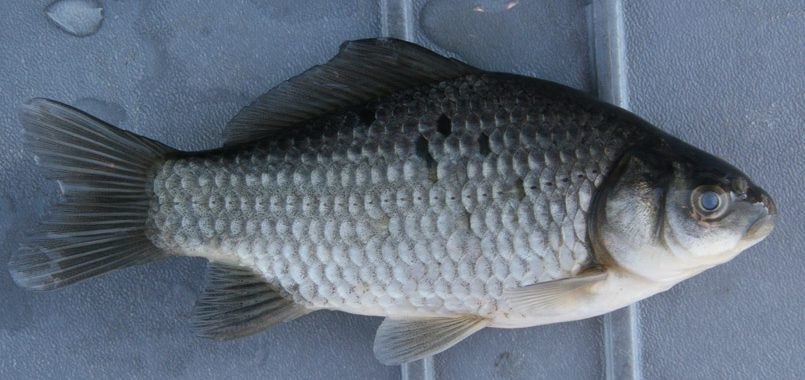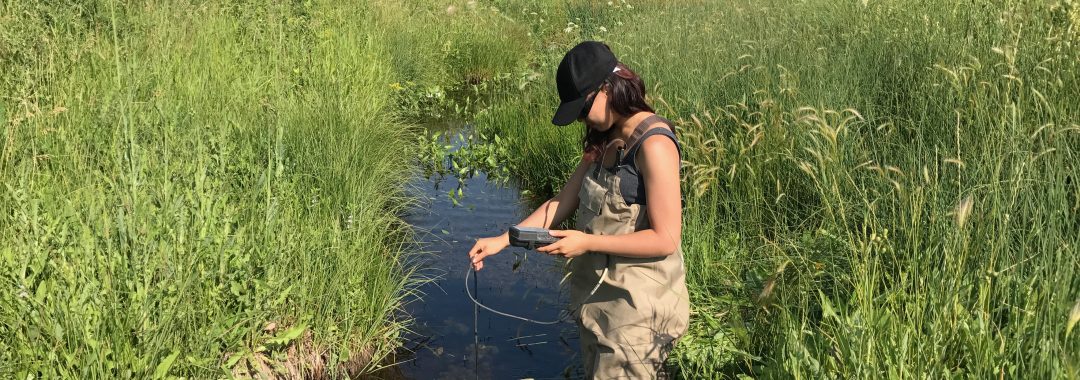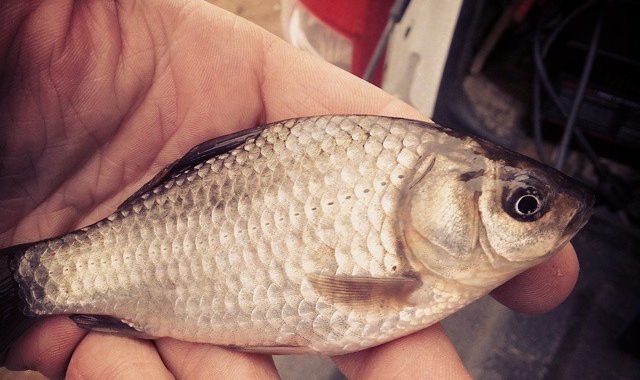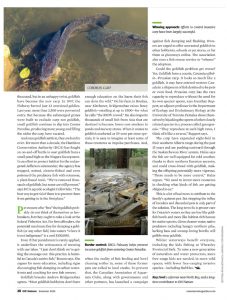Congratulations to Jamie Card and Brittney Firth for having their papers accepted for publication (link1, link2). Both papers are on aquatic invasive species and their management. Keep an eye on our publications as these work their way through the pipeline!
Tag Archives: Invasive
Firth, B., Poesch, M.S., Koops, M., Power, M. and D.A.R. Drake. (2021) Diet overlap of common and at-risk riverine benthic fishes before and after Round Goby (Neogobius melanostomus) invasion. Biological Invasions 23(1): 1-14.
Abstract:
Round Goby (Neogobius melanostomus) has invaded high diversity tributaries of the Laurentian Great Lakes, including those supporting multiple species of conservation concern. The extent and magnitude of ecological impacts on benthic riverine fishes is poorly understood, especially changes in dietary overlap and feeding strategy. We used a before-after study design to examine the impact of Round Goby on native benthic riverine fishes, including the Threatened Eastern Sand Darter (Ammocrypta pellucida) in the Sydenham River, Ontario, Canada. To evaluate shifts in diet overlap and feeding strategy, fishes were collected with multiple gears and the direct (diet overlap with the invader) and potential indirect (diet overlap among the native benthic fishes) impacts of Round Goby were assessed. Before the arrival of Round Goby, there were a total of 6 ecologically significant diet overlaps among the studied native benthic fishes. Following the arrival of Round Goby, there were 20 ecologically significant diet overlaps, with 6 out of 8 species, including Eastern Sand Darter, showing significant diet overlap with Round Goby. Fishes exhibiting significant dietary overlap with Round Goby shifted feeding strategies to become more specialized, a change in feeding consistent with potential competitive effects. Although the long-term consequences of invasion-induced dietary and feeding shifts remain poorly understood, increased competitive interactions suggested by dietary overlap may be occurring between Round Goby and native benthic riverine fishes and may exacerbate the observed declines of native species.
Citation: Firth, B., Poesch, M.S., Koops, M., Power, M. and D.A.R. Drake. (2021) Diet overlap of common and at-risk riverine benthic fishes before and after Round Goby (Neogobius melanostomus) invasion. Biological Invasions 23(1): 1-14.
Also Read:
Card, J.*, Hasler, C., Ruppert, J.*Donadt, C.* and M.S. Poesch. (2020) A three-pass electrofishing removal strategy is not effective for eradication of Prussian Carp in a North American stream network. Journal of Fish and Wildlife Management 11(2): 485-493.
Abstract:
Prussian Carp Carassius gibelio, also referred to as Gibel Carp, is a destructive aquatic invasive species, recently, found in Alberta Canada. Three-pass electrofishing is a potential approach to control some aquatic invasive fish species in stream habitats. The objectives of this study were to: 1) determine the efficacy of this strategy to control Prussian Carp in connected streams; and, 2) assess whether removal success was influenced by population size or the distance to the introduction site. We sampled sites using electrofishing in tributaries of the Red Deer River in both the summer and fall. Prussian Carp were detected at all sites prior to removal, with > 90 % probability of detection of this species within the first 120 m of electroshocking efforts. Overall, removal was deemed unsuccessful. We found that abundances of Prussian Carp were significantly higher post-removal. Removal success was significantly related to distance to the introduction site, suggesting that removal may be useful in targeted situations close to the edge of the invasion front. Additional removal and control strategies are needed by managers.
Citation: Card, J., Hasler, C., Ruppert, J., Donadt, C.* and M.S. Poesch. (2020) A three-pass electrofishing removal strategy is not effective for eradication of Prussian Carp in a North American stream network. Journal of Fish and Wildlife Management 11(2): 485-493.
Highlighted in media: (link here)
Also Read:
*Lab members: Jamie Card, Jonathan Ruppert, Caitlyn Donadt and Mark Poesch. Check out opportunities in the lab!
Research on Prussian Carp eradication highlighted in media (Magazine: Ontario Nature)
Research from a team in the Poesch lab was highlighted in Ontario Nature magazine. The story about eradication of carp, also discusses new results of a study just accepted and coming out soon in the Journal of Wildlife Management. Former post-doctoral researcher, Dr. Jonathan Ruppert, is highlighted in the piece. Other people who contributed to the study include former lab members Jamie Card and Caitlyn Donadt, and colleague Dr. Caleb Hasler from the University of Winnipeg.
Dr. Poesch gives presentation on impacts of Prussian Carp to freshwater fishes at the Alberta Invasive Species Council meeting in LaCombe, AB.
Thanks to the Alberta Invasive Species Council for the invitation to present some of our research and to discuss Prussian Carp more broadly!





